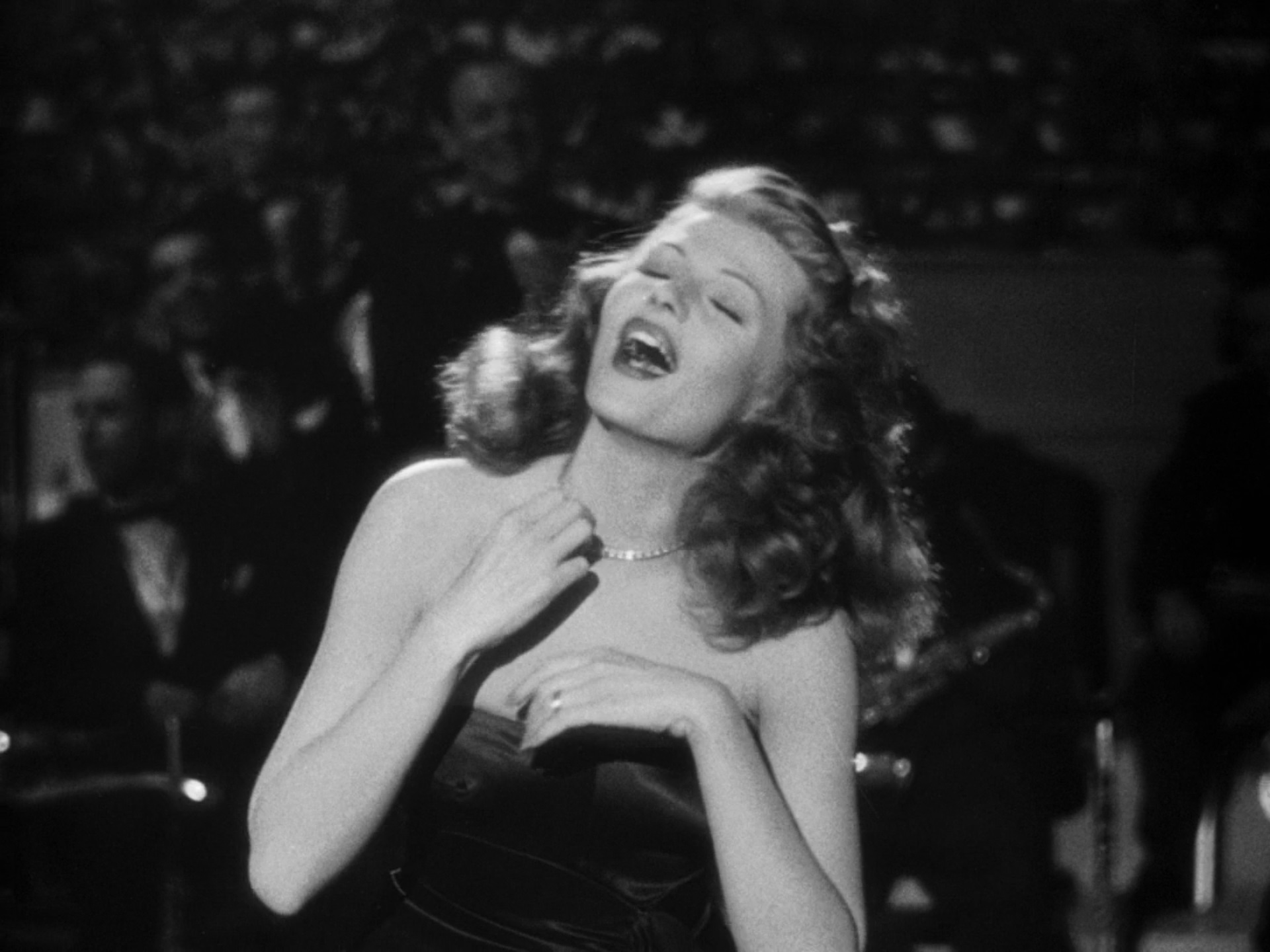 Gilda (1946) 01:40:39
March 3, 2021
Gilda (1946) 01:40:39
March 3, 2021
Johnny’s Confession in Charles Vidor’s Gilda (1946)
The film Gilda (Dir. Charles Vidor, 1946) follows a down on his luck Johnny Farrell (Glenn Ford) scraping his way by on the wrong side of the law, when he meets a wealthy businessman Ballin Mundson (George Macready). Gilda is a drama thriller but contains film-noir characteristics like dark shadows, a twice intentioned plot mystery, and daring autonomous characters. Set in Argentina, Gilda shows us Johnny first throwing hot dice for money when Ballin saves him from a bad situation and gives him a job at his casino. Johnny becomes more and more involved with the casino and earns the trust of being Ballin’s right hand man. After some time has passed like this Ballin comes home with a fiancé, Gilda (Rita Hayworth), who has a past with Johnny that was never resolved or healed. Gilda struggles in this predicament and leads Johnny to believe she is being unfaithful to Ballin while forcing Johnny to cover for her. Meanwhile Ballin reveals that he is at the head of a tungsten mafia organization, there is a disagreement between him and some of his associates, and he shoots one of them. Johnny then flees with Gilda after the attack, where Ballin discovers them confessing their remaining love for each other. Ballin fakes his death, and Johnny marries Gilda for Ballin’s inheritance but remains resenting her for “cheating” on Ballin. Gilda collapses under the emotional strain Johnny applies to her, in the same way Ballin’s illegal casino and cartel begin to fall apart. The final sequence involves the breaking down of the character’s masks, the reveal of Johnny and Gilda’s true intentions to each other, and the resolution to most of the plot. The establishing shot of the first scene of this sequence is a medium shot overhead of Johnny at his end, his head down at his home. His relationship with Gilda has seemingly reached its breaking point, and then the detective Maurice (Joseph Calleia) joins him to discuss his affairs. Despite being cornered on the illegal tungsten trade and illicit casino, Maurice can tell what truly is bothering Johnny is losing Gilda, not the threat of the crimes. Maurice orders Johnny to house arrest until he complies with him. We dissolve to Johnny facing away from the camera out a window, while listing out the code to the safe some short time forward. Maurice in return tells Johnny not only is Gilda still waiting at the casino, but she was just acting for Johnny’s attention. The frame of Maurice looking on as Johnny walks out of the room dissolves into a long shot of the resigned casino bar, with a speck of Gilda among the chairs preparing for her departure. Uncle Pio (Steven Geray) tries to comfort Gilda, but she is as devastated as Johnny was. Johnny arrives and they both pause; Gilda stands from her chair almost not believing it is him. In a three-shot, Johnny walks up and joins her at the bar, the camera zooms in as Johnny greets Pio. There are two medium shots of Johnny at the casino bar scene, shots eleven and thirteen. The eleventh shot of this scene, at 1:46:25 to 1:46:44, is a medium over the shoulder shot of Johnny confiding to Gilda that he still loves her and confessing his mistakes to her. This shot, I argue, is important to this sequence because it shows the depth and transformation of Johnny’s character through the display of polyphonic features in his expressions, and therefore also highlights the transformation of his relationship to Gilda, our film’s namesake.
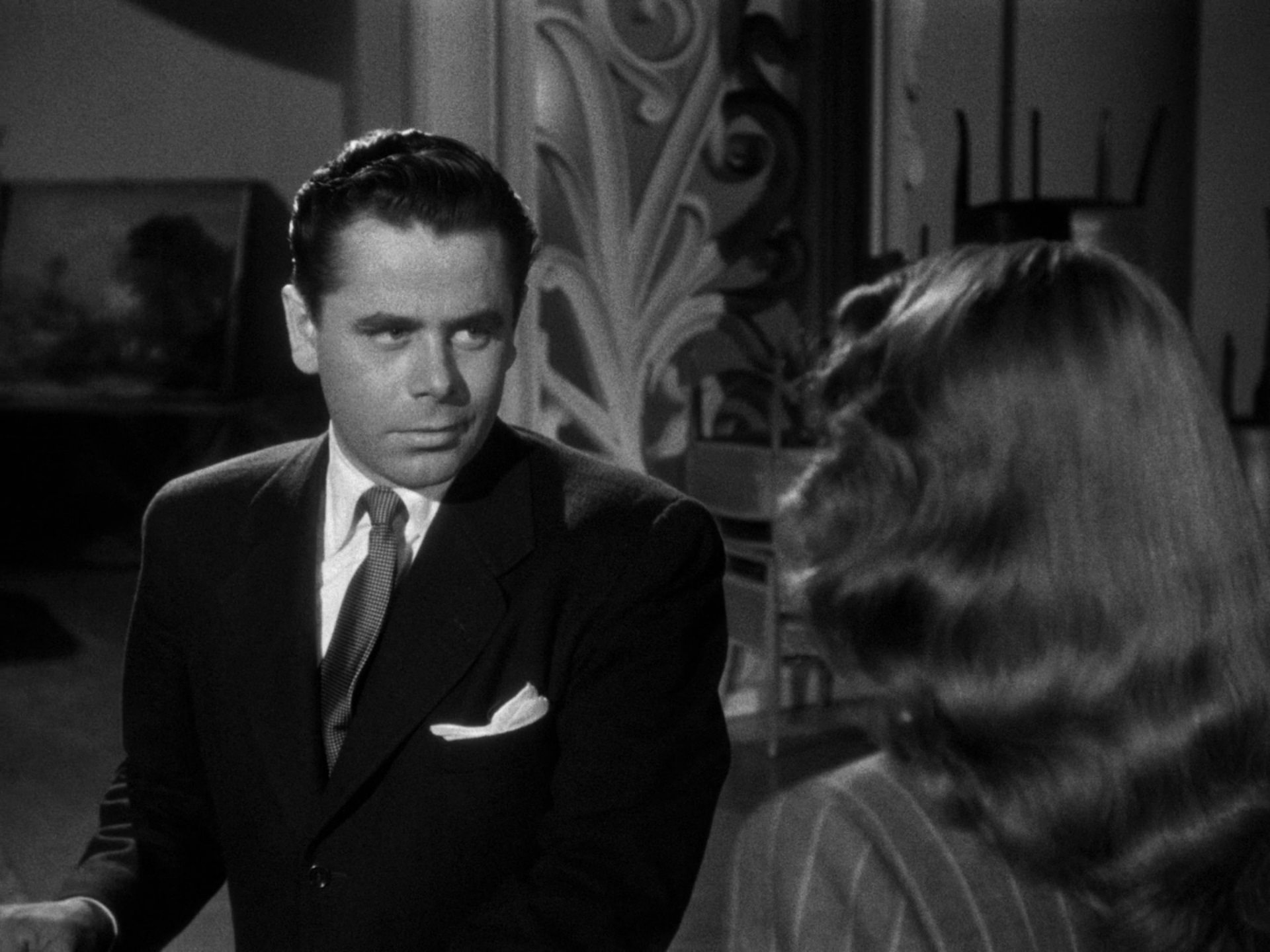 Gilda (1946) 01:46:29
Gilda (1946) 01:46:29
The camera straight cuts from Gilda to this shot of Johnny in a perspective medium shot over her shoulder. In typical film-noir style this shot, like most of Gilda, has low-key lighting, with a not too bright key light from above and a much dimmer fill light. This creates dark shadows in the mise-en-scene including across Johnny’s face. Johnny is wearing his best suit, dark as night black with a square pattern woven tie, buttoned up over a starched dress shirt. Johnny’s hair is greased back, his face only not completely dry due to his stress. Gilda, visible from behind, wears a pinstripe blouse, and has her hair characteristically styled down and to the side. The camera remains static during the nineteen second confession to Gilda, and Johnny is framed by the mise-en-scene around him. Over his left shoulder is a sculpted decorative see through wall, a smooth, flowing, multi-pathed architecture stretching across his sight to Gilda, who’s brunette form makes up the bottom right of the frame. Overturned chairs on tables not visible, representing the closing of the casino and changing of their lives, take up the upper right portion of the frame. A dimly lit wall of the hall-room makes up the space behind the chairs. A painting propped up on the wall, possibly to be shipped or sold makes up the left frame of the shot. With the painting to the left of Johnny and this multi-facetted connection to Gilda to his right, the mise-en-scene and frame of the shot itself shows the crossroads Johnny is at in his life and the complexities of his relationship with Gilda. The uncertain fate of his future, moving back home to uncertain possibilities, is represented by the painting. His painful past, his forgiveness, love, regret, passion, and discord between him and Gilda is manifested on the screen by the decorative wall of the casino between their faces in the mise-en-scene.
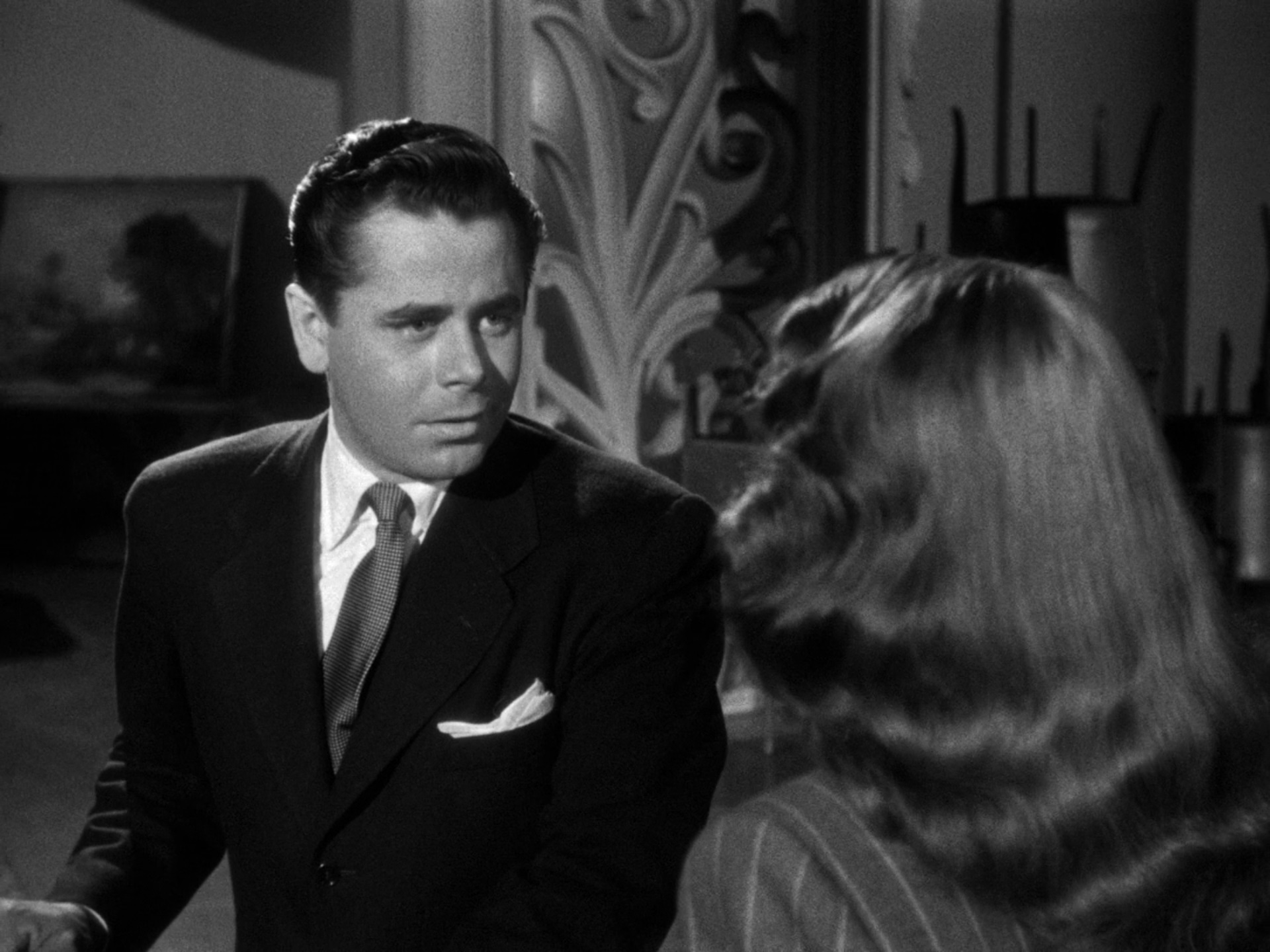 Gilda (1946) 01:46:44
Gilda (1946) 01:46:44
Johnny’s appeal to Gilda reveals many emotions of his, primarily through Glenn Ford’s acting. Remorse, weakness, affection, his longing for approval, his loneliness, even his solace in the moment, his pride and strength, and his love for Gilda are all composed within the facial features of Johnny during this shot. All these multi-dimensional emotions somewhat contradict themselves, but in this way, film can imitate the actual human condition of self-contradiction through the theory of close-up shots (and sometimes medium shots) called the polyphonic play of features. This idea was first discussed in film by Béla Balázs, who was a Hungarian filmmaker, and one of the earliest and most active film theorists. Balázs lived from 1884 to 1949. Balázs’ Theory of the Film was published in 1945, and in such he mentions, among many theories of analyzing film, the theory of polyphonic play of features. He defines this as “the appearance on the same face of contradictory expressions… [a] chord[,] a variety of feelings, passions and thoughts are synthesized” (Balázs 64). The theory of polyphonic features is the expression of complex, sometimes competing emotions creeping their way into the facial expressions of an actor. Polyphonic features can be a nervous tick during testimony, the disguising of attraction during a business meeting, or as in the case of our shot of Johnny in Gilda, the flashes of vulnerability, hesitation, and loneliness seen through Johnny’s remorseful eyes as he attempts to keep his “manly” composure that society expects from him.
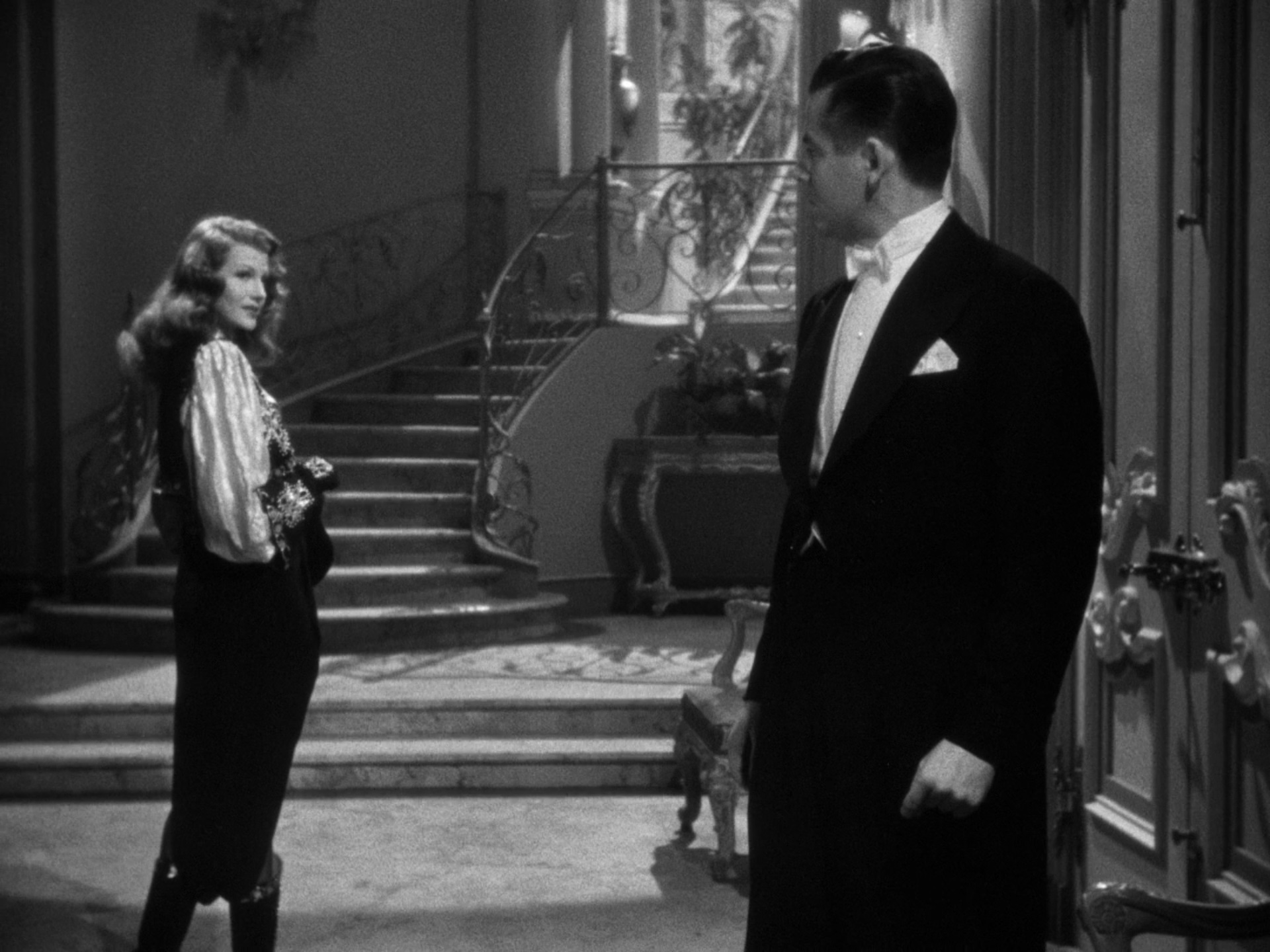 Gilda (1946) 01:13:58
Gilda (1946) 01:13:58
Johnny begins the shot with his eyes downcast to the left, not at Gilda but past her, turns his head toward Pio raising his eyes briefly, almost for approval or also maybe in seeking forgiveness. Although the camera, most of the mise-en-scene and Johnny’s feet are static, he stirs subtly in his suit. Johnny closes his eyes and un-purses his lips, taking in a sharp breath before turning towards Gilda and opening his eyes while still nearly leaning away. The silence between the two lingers, his eyes narrow and he hovers in Gilda’s orbit for a few seconds as the music plays through its progression to a crescendo. As Johnny opens with the words “I want to go with you Gilda” his jaw clenches, almost bites the words down with determination, his bottom lip is trembling with his heartbeat, only visible by the recoil to its pair before his next words. “Please, take me”, Johnny utters, as he turns his head further to the left to face Gilda, his eyes narrowing with determination. The lighting creates a shadow over the corner of his mouth, making almost a hidden smile at the thought of their life together. His eyes jump, focusing slightly on different subjects, imitating his mind jumping from planned words to outcomes dreamed and pains suffered. Each of the polyphonic features displayed by Johnny are examples of Balázs’ theory. Each expression at first seems straightforward but is comprised of subtle subtext and inner-battling emotions revealed by the camera in its focus and by the actor in the mise-en-scene. Johnny, being not entirely sure he has convinced Gilda, again draws backwards and swallows turning his eyes again downcast but this time towards Gilda’s feet. He confesses that he “did everything wrong”. Johnny’s lips curl into a frown from his chin, his eyes break into tear wells without water. Johnny shakes his head from side to side and lowers his eyebrows surrendering his façade of strength to her, his pain fomenting in his eyes and agape mouth. He waves barely in his stance, like a young tree in the wind watching for Gilda’s response, living for her acceptance.
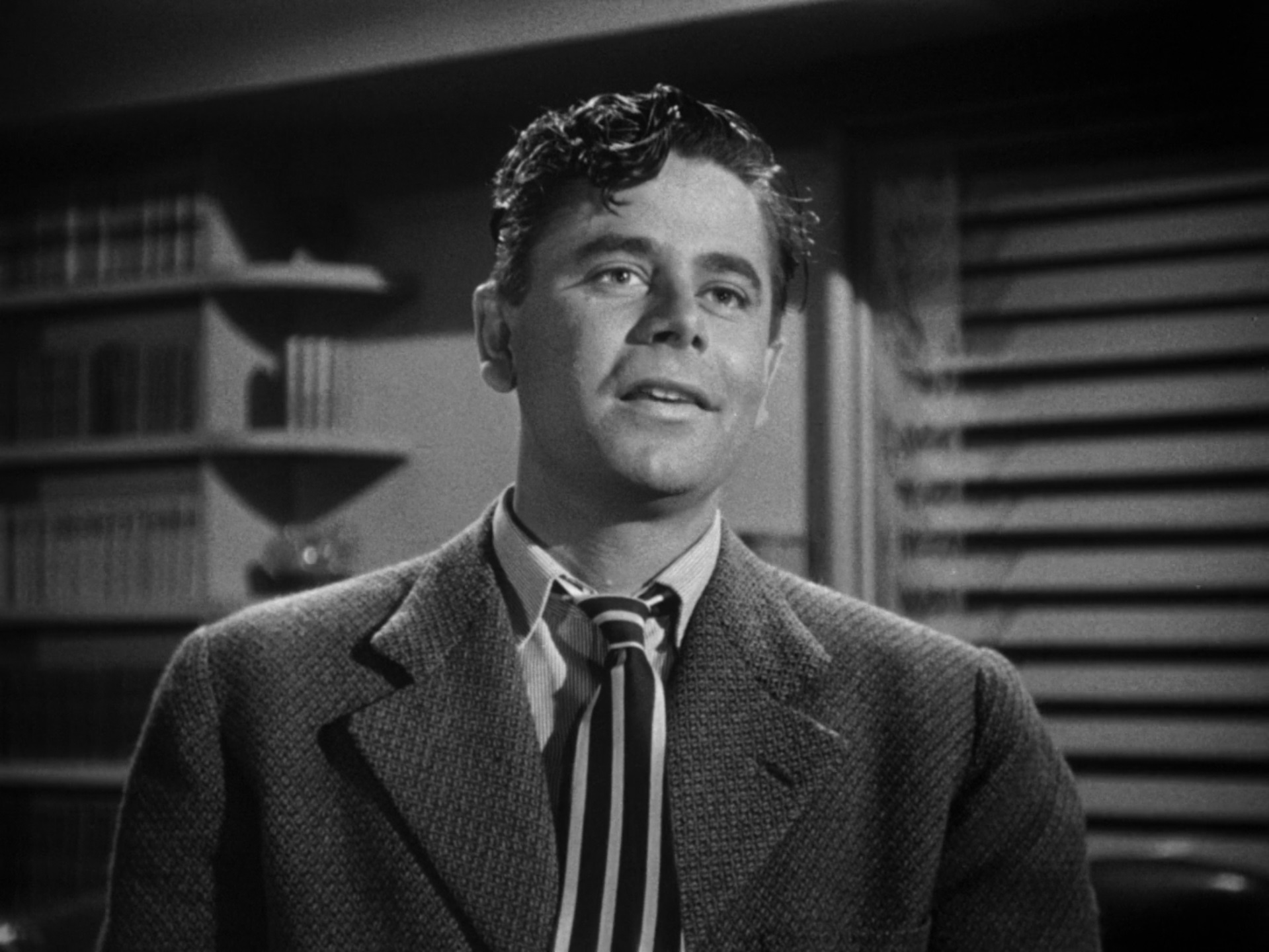 Gilda (1946) 00:11:09
Gilda (1946) 00:11:09
The polyphonic display of features by Johnny in the shot, the deliberate choice of which ticks and emotions to display advances the syuzhet by parsing through the vast fabula of Johnny and Gilda. His vulnerability at the climax of the film undercuts his entire character thus far in the film, yet also at the same time deepens the humanity of his struggle and growth throughout. David Bordwell describes the principals of classical Hollywood film style as attempts to hide the camera away and allow the characters to explain the story or fabula through a methodical plot or syuzhet (Bordwell 26). Bordwell underlies the presence of continuity editing, techniques that link one scene to another, music scores, and chronological events as aspects of classic Hollywood cinema, as well as a realistic linear plot and setting. Glenn Ford’s performance in our shot explicates which aspects of Johnny story and person are needed to advance the plot and inform the audience. His shaky demeanor in this shot, contrite yet determined, when laid against his stone-face attitude earlier in Gilda reveals a conflict within Johnny that is absent in the dialogue. This revelation of the story in the plot is understood better by applying Balázs’ theory of polyphonic features against Bordwell’s understanding of classic Hollywood cinema. A critical aspect to understanding Gilda’s plot is held within the medium shot of Johnny while he reveals himself to Gilda.
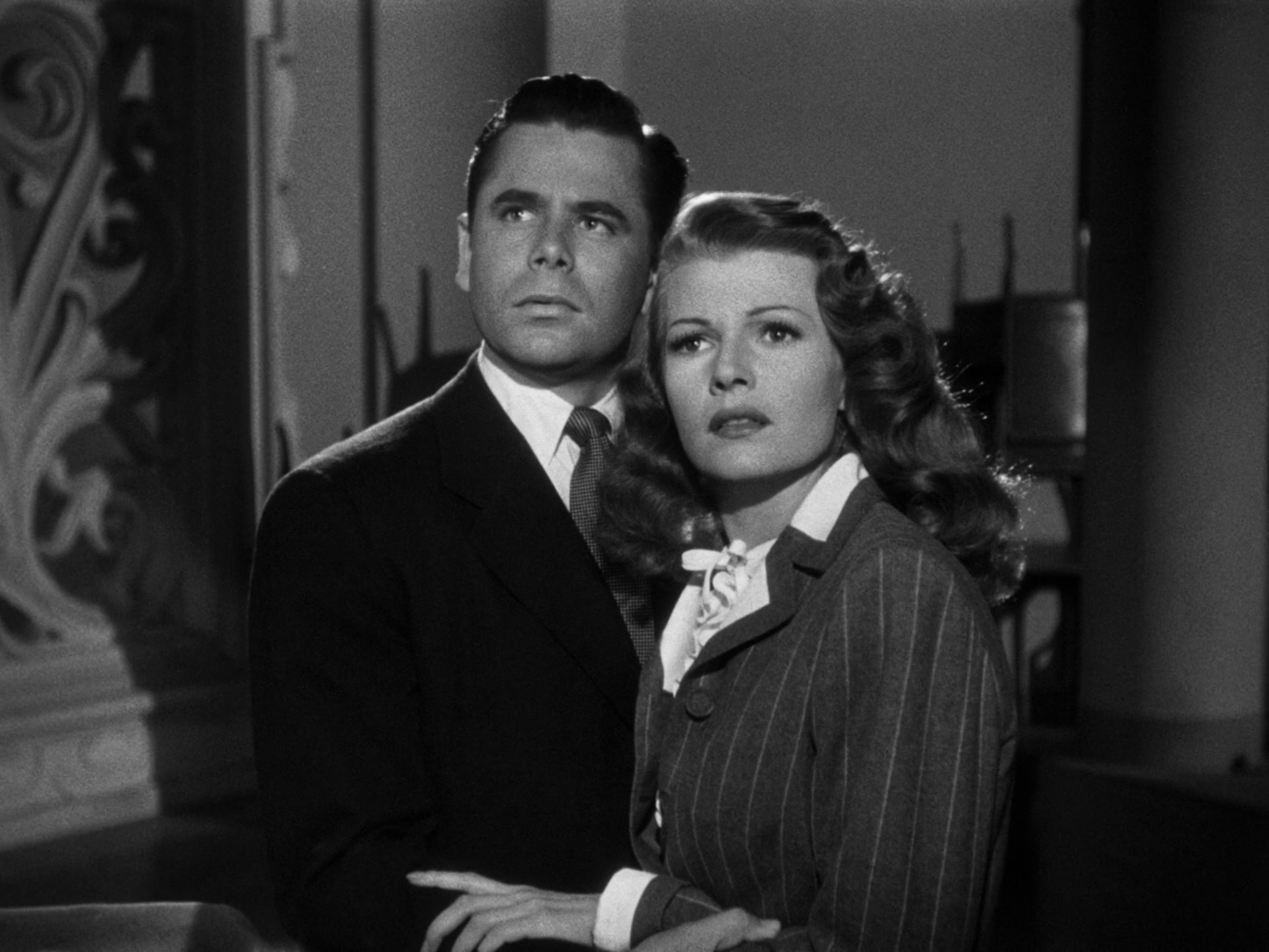 Gilda (1946) 01:47:09
Gilda (1946) 01:47:09
Johnny, by breaking down to Gilda and requesting her forgiveness, in turn uncovers the same remorse in her. She laments how they both behaved poorly in their frustrations, their story is progressed and resolved by his gesture of authenticity, which is introduced to the audience by the polyphonic features of Johnny in the eleventh shot of the casino bar scene. Ballin descends upon their happy ending only to be stopped by his own cane at the hands of Pio, all in front of an onlooking detective Maurice. The sequence is ended with a short conversation between the four individuals remaining in the casino. Finally, Gilda and Johnny end up “going home”. The most important shot of this scene though, and I would argue of the entire film, is Johnny showing his full-figured character in front of Gilda. Those nineteen seconds across Johnny’s face express almost as much as the entirety of the dialogue from Johnny in all of Gilda.
Balázs, Béla. "'Polyphonic' Play of Features; Microphysiognomy" Theory of the Film, 1945, pp. 64-66. https://archive.org/details/Theory_of_the_Film_Bela_Balazs/page/n67. Accessed 3 March, 2021.
Bordwell, David. "Classical Hollywood Cinema: Narrational Principles and Procedures." Narrative, Apparatus, Ideology A Film Theory Reader. Philip Rosen, editor. Columbia Univeristy Press, 1986, pp. 17-32. ISBN 9780231058810.
Gilda. Directed by Charles Vidor, performances by Rita Hayworth, Glenn Ford and Geroge Macready. Columbia Pictures Corporation, 1946.
Chandler Murray
e:Murrayc15@gator.uhd.edu